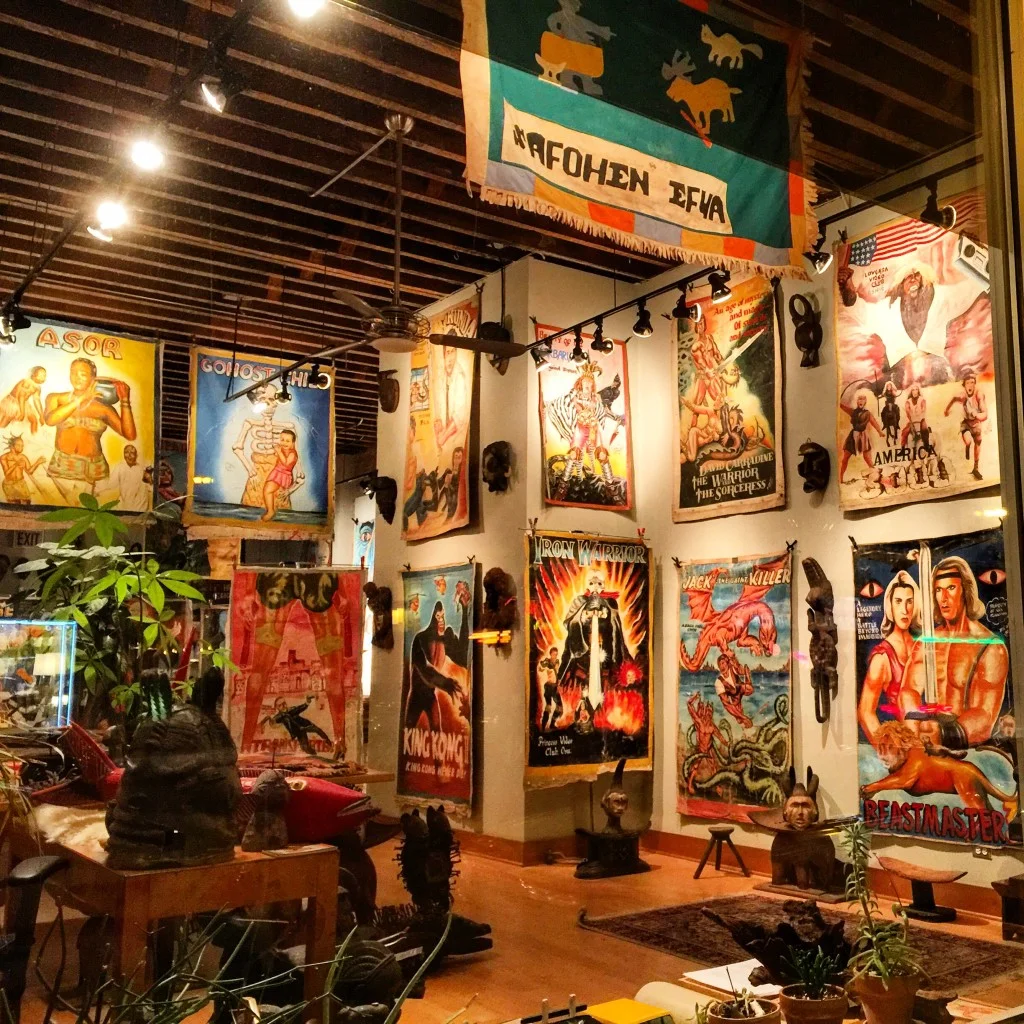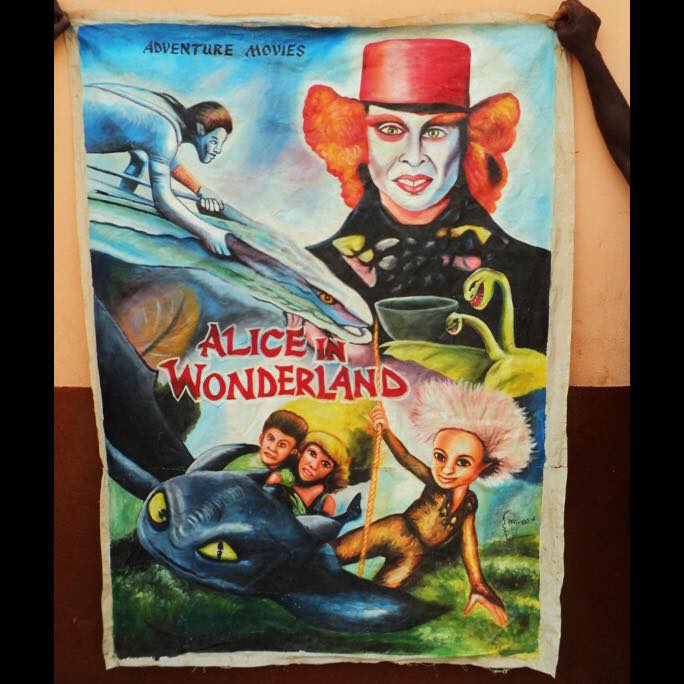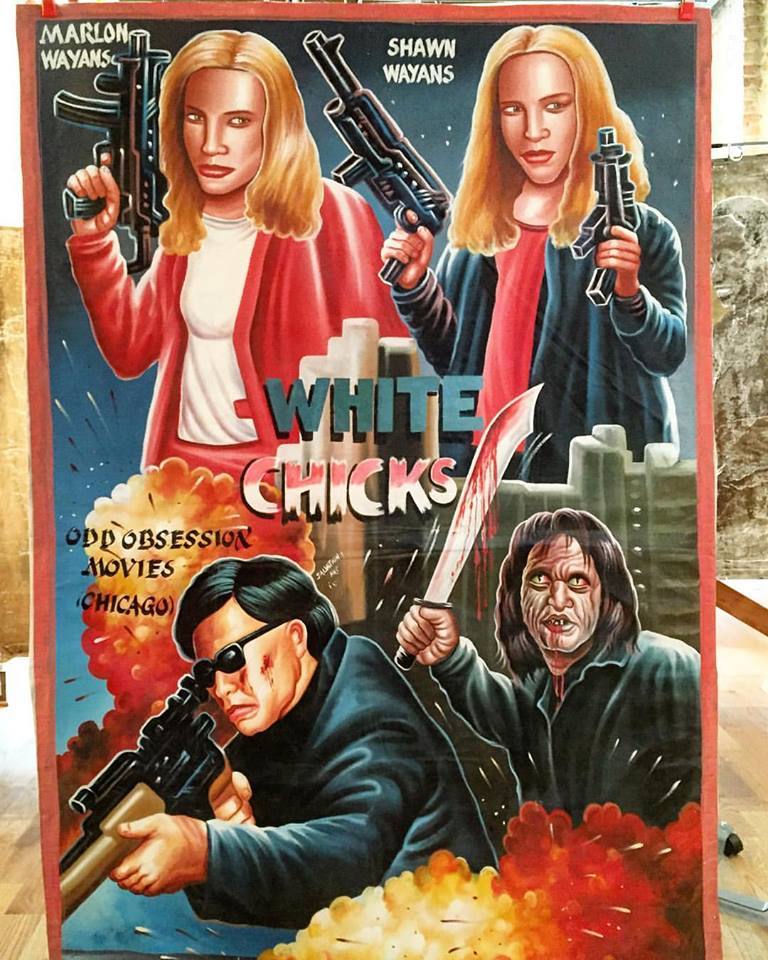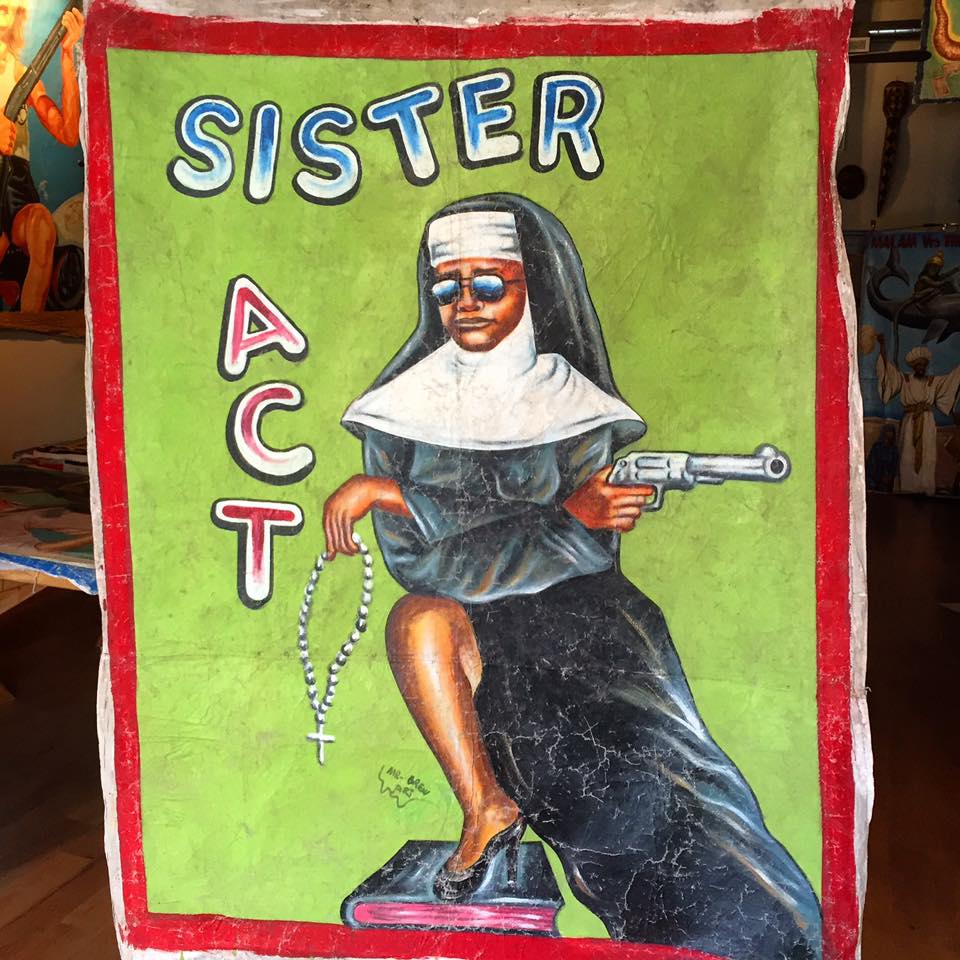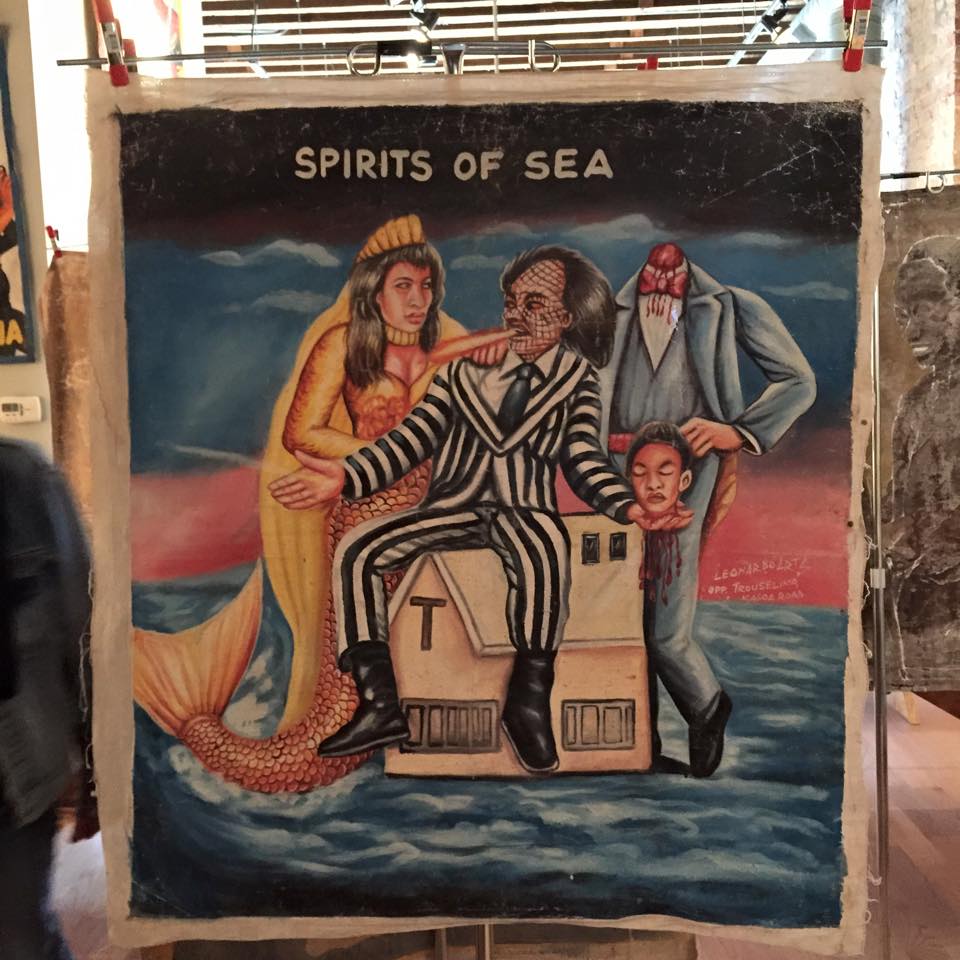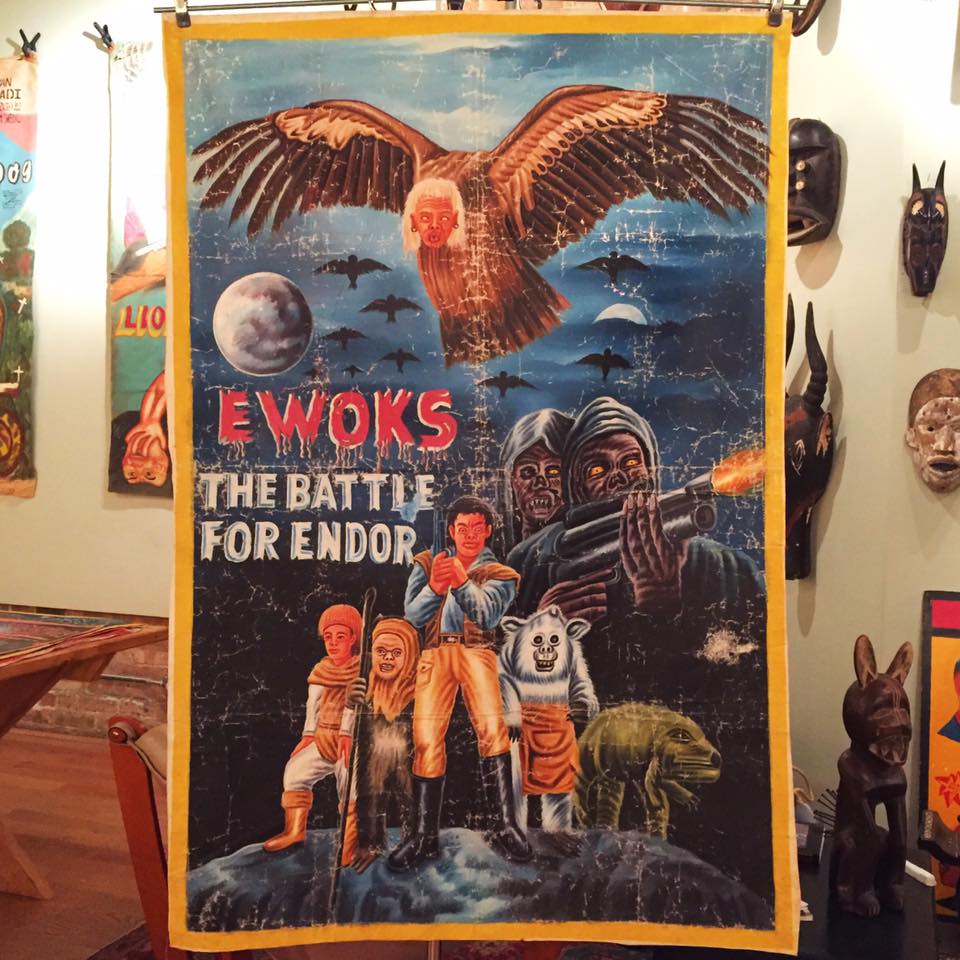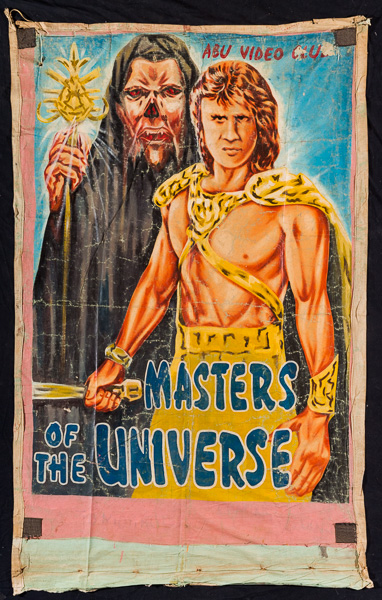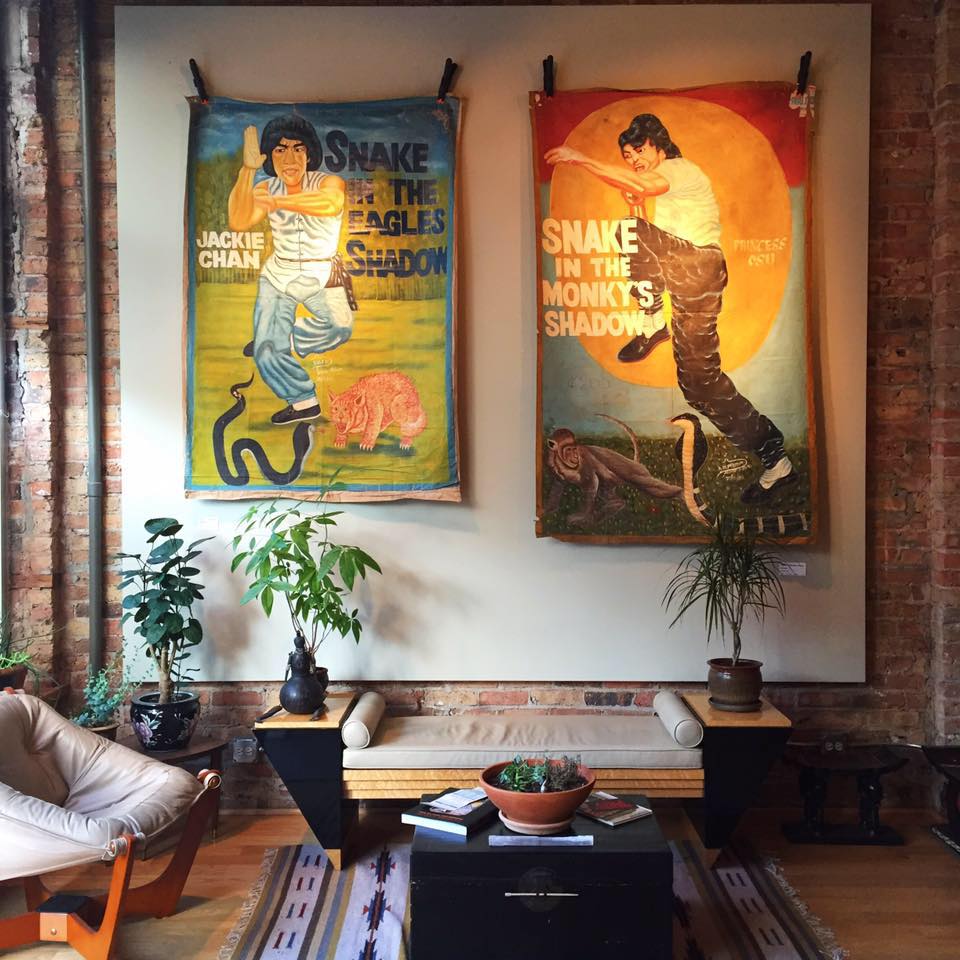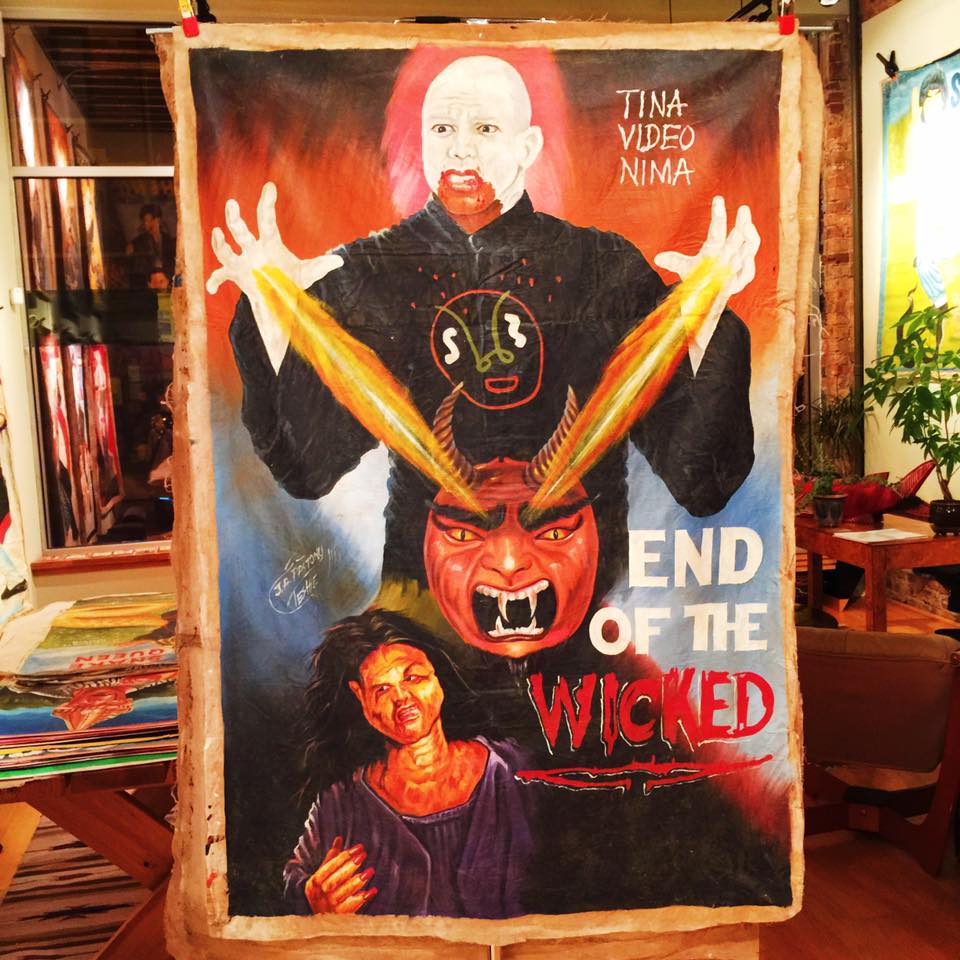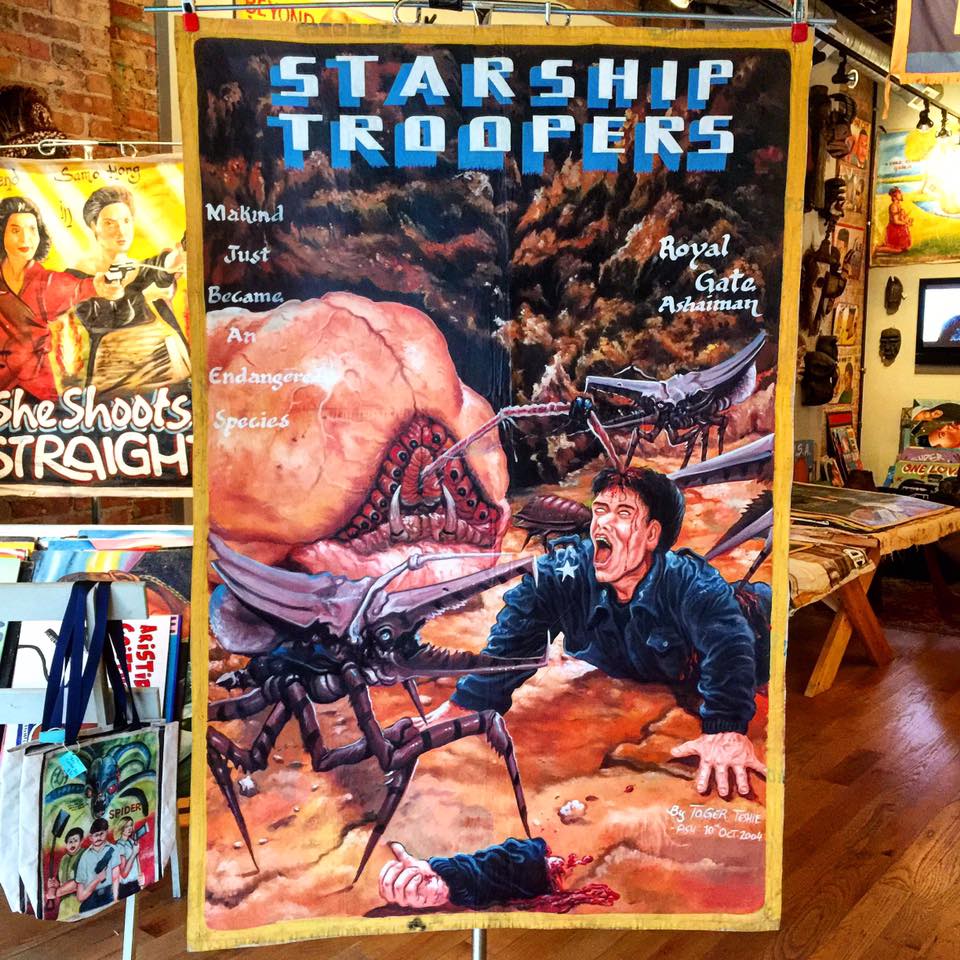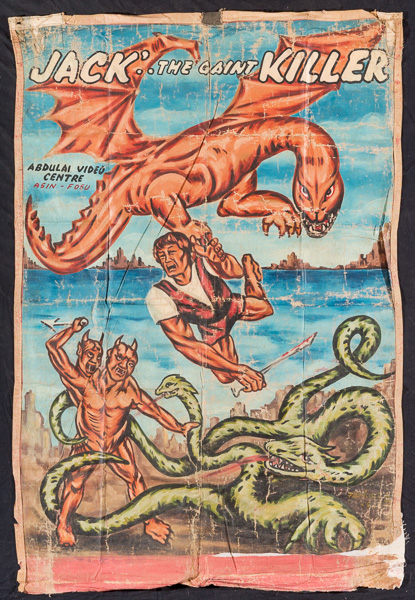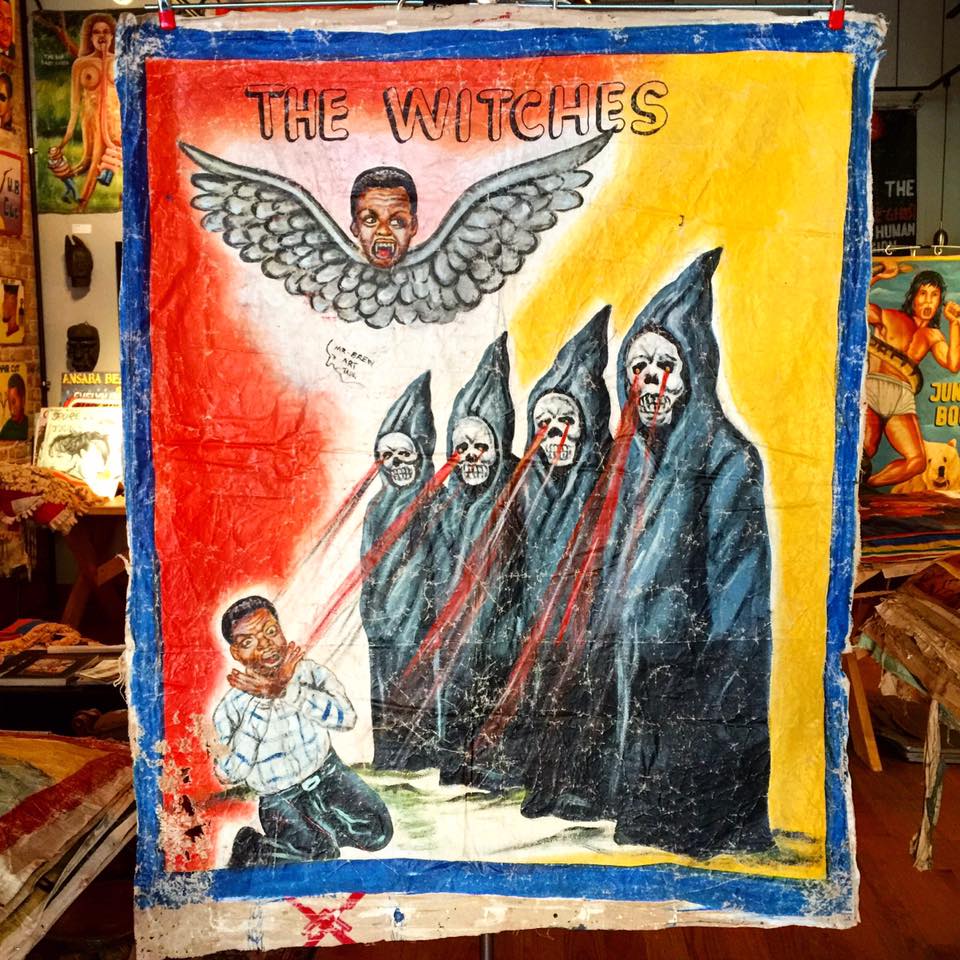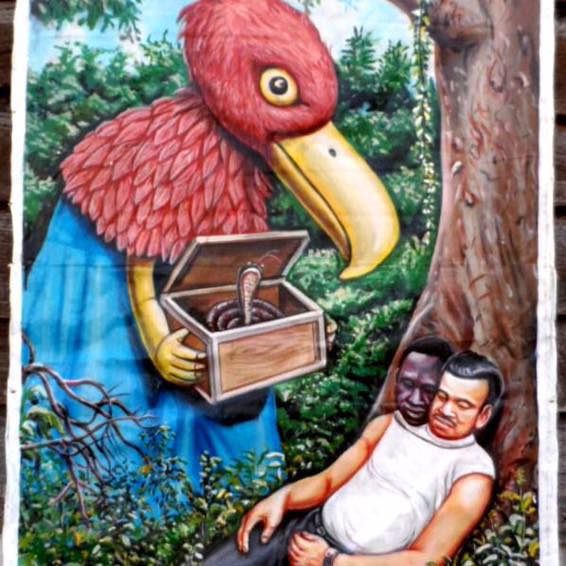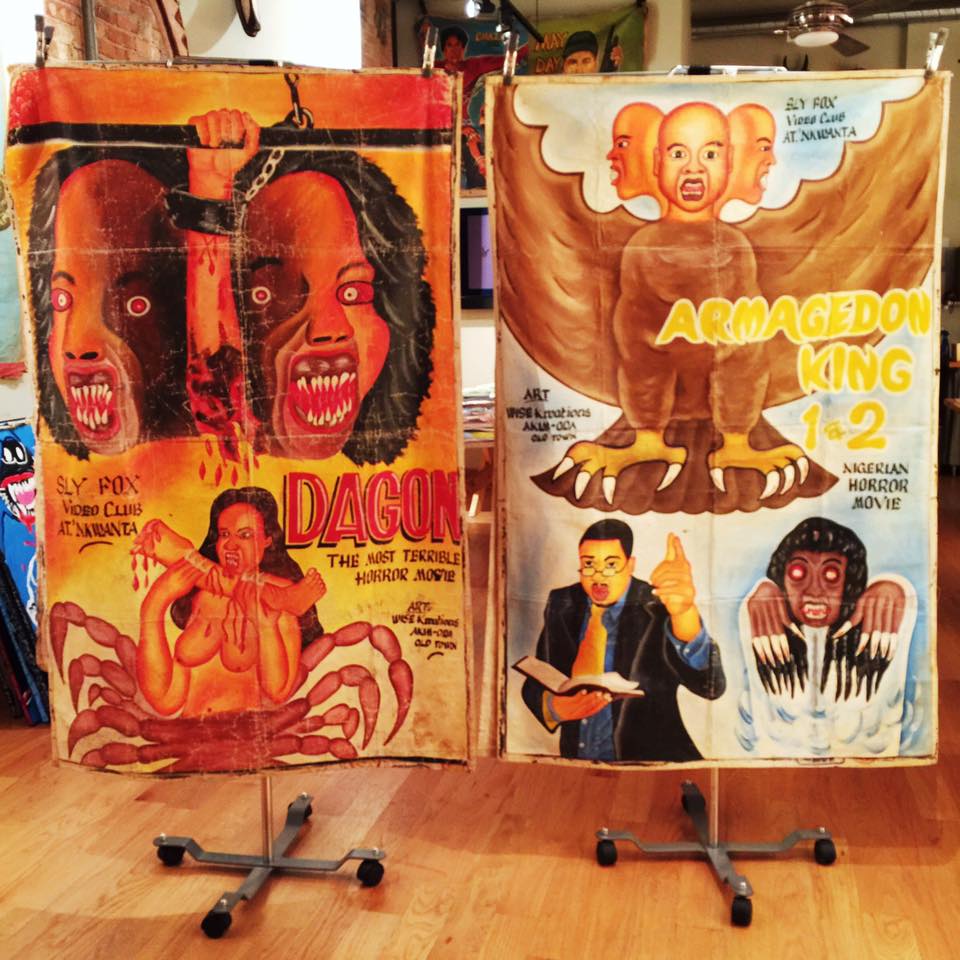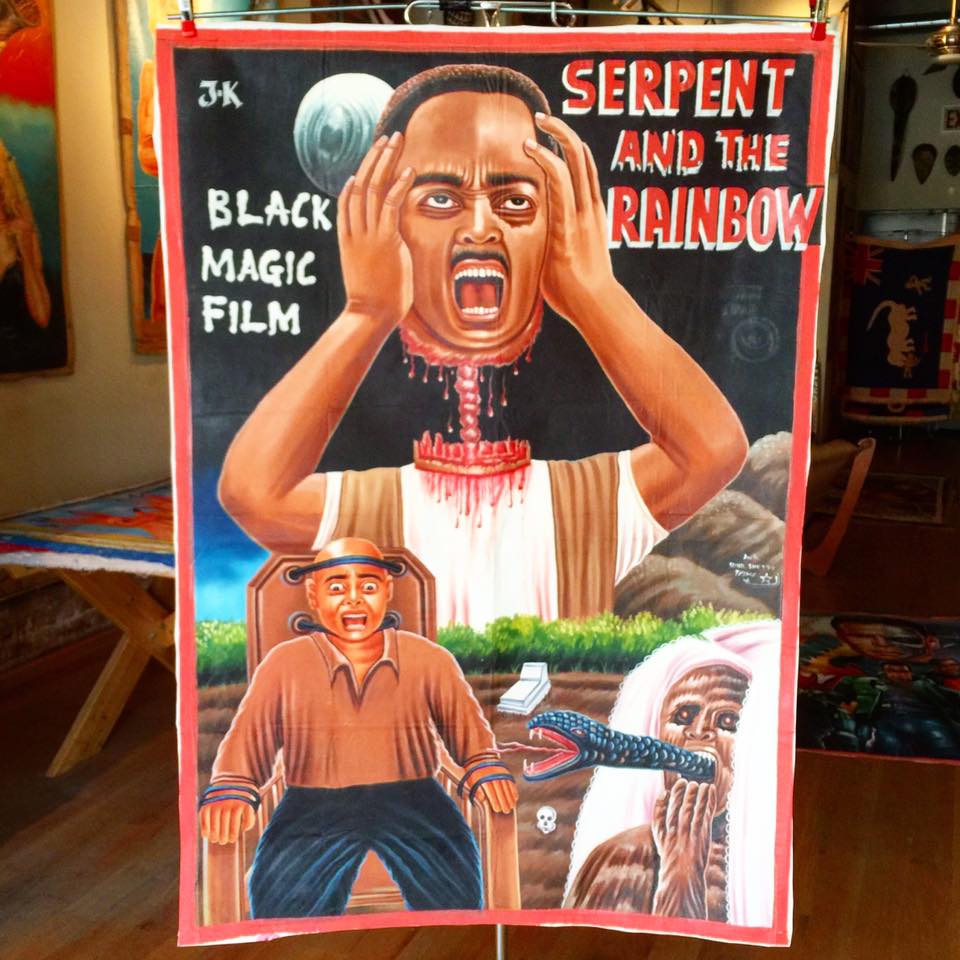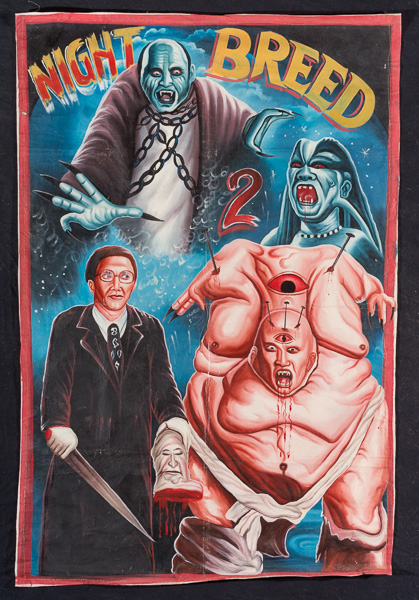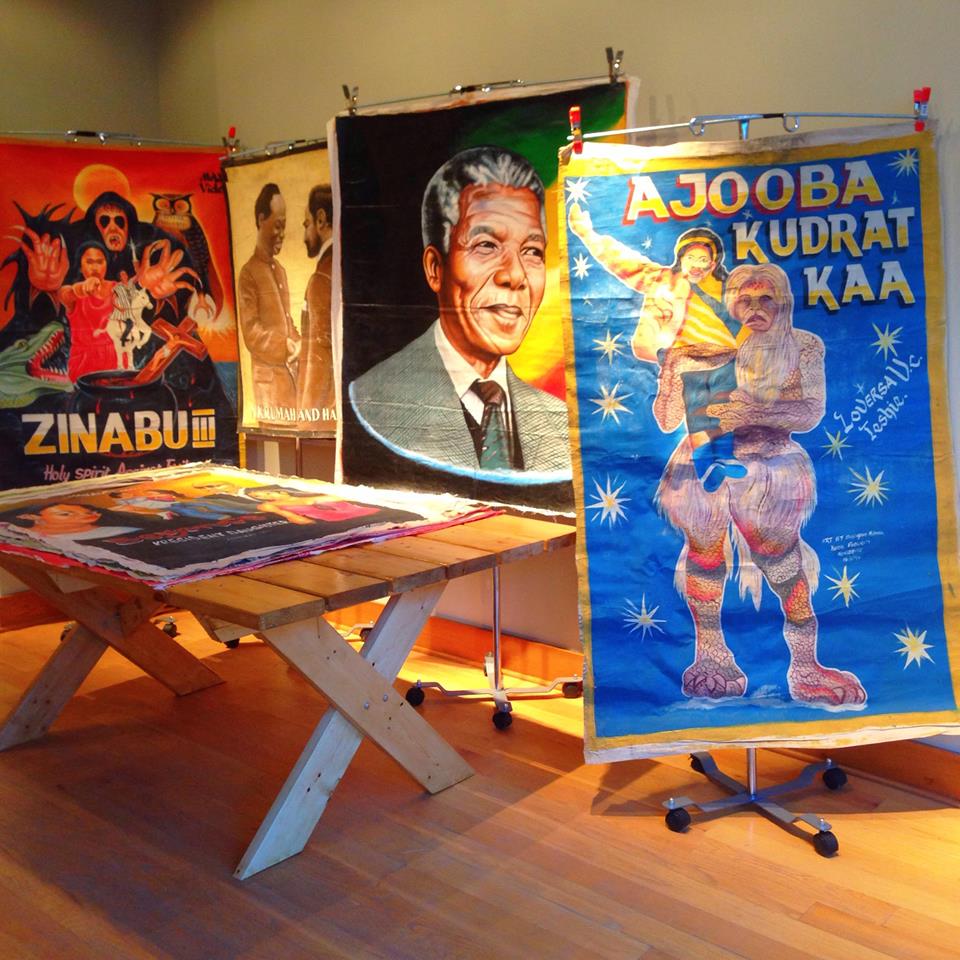Hand-painted Ghana movie posters from Deadly Prey Gallery are hyper-violent, super-sexualized — and take great artistic liberties.
We had never seen anything like these movie posters from Ghana that were hand-painted on flour sacks
They were the most bizarre movie advertisements we had ever seen. Hand-painted from Ghana, the artists took quite a bit of creative license. When Duke came across a shoutout on Majestic Disorder’s Instagram feed for an opening at Deadly Prey Gallery, I didn’t need much convincing.
We giggled our way through piles of “posters” and ended up buying one for Head of Medusa (actually Clash of the Titans, one of my favorite movies from childhood).
Duke and Wally bought this poster called Head of Medusa, though it’s really advertising Clash of the Titans
“Traveling video clubs were formed, consisting of an operator or two, a truck, a television, a VCR, VHS movie tapes and a portable gas generator. Traveling from village to village, these clubs would transform any space made fit into a makeshift movie theater.”
As you can see, the movie posters take quite a bit of liberties with their subject matter
As we flipped through the crazy artwork, we couldn’t help wondering, Where the heck did they come from? And how did Brian Chankin, owner of Deadly Prey, begin collecting them? We simply had to get the story.
Brian models one of his collection of Ghana movie posters for sale
Tell us about what the posters were used for.
The posters were first part of a much larger industry called the Ghanaian Mobile Cinema. In the mid-80s, several groups of industrious Ghanaians eager to find business opportunity in the blossoming home video market put together some plans. The idea was to bring movies and a movie theater-like experience to areas in the Ghanaian countryside void of electricity.
Traveling video clubs were formed, consisting of an operator or two, a truck, a television, a VCR, VHS movie tapes and a portable gas generator. Traveling from village to village, these clubs would transform any space made fit into a makeshift movie theater.
How did the advertisements come about?
The clubs were immediately popular, so naturally much competition arose. One village might have two or more movies playing at a time, so an advertising motif came into play.
African artists have long hand-painted their signs for barber shops, pharmacies and other businesses. This hand-painted approach is not only economical in times of high-cost printing, but also highly personal.
Video club operators understood the need to have their service stand out, so they started commissioning work to sign painters and other talented local artists to advertise specific movies they’d be showing.
The traveling cinema flourished until the turn of the century, but soon after then printing prices became affordable, and many more people throughout Ghana had access to in-home television and movies. The hand-painted poster however is still the true standard in local theaters, city and countryside. Though in lower numbers, there are many working movie poster artists in Ghana today making commissioned work, local and international.
What were they painted on?
They are painted on used flour sacks. Usually two sewn together together, though it is common to paint on a single sack or a piece of a sack. The smallest I’ve seen measure approximately 32 by 24 inches, while the largest I have measures 85 by 48 inches.
How did you come across them?
I first discovered them six-plus years ago, in an amazing book called Ghanavision. It covers posters made after the year 2000. There’s a beautiful two-part monograph on the movie posters made pre-2000 titled Extreme Canvas as well.
We don’t recall this scene in Mrs. Doubtfire — do you?
We noticed the posters have violence on them, even when the movie doesn’t have any, like Mrs. Doubtfire. Why is that?
Violence is definitely a device used to draw attention to the poster. In the case of Mrs. Doubtfire, that was a special commission where over-indulgence was definitely asked for.
Oftentimes, the American, European or Hong Kong movie poster might have been used by the artist as a reference point — however, you’ll rarely find a copy without many many liberties being taken. This is the beautiful thing.
Brian took his gallery name from this movie, a cult classic in Ghana
What’s your personal fave?
I have two favorites, both acquired very early in my collecting. Deadly Prey and The Warrior, both by the artist Leonardo for Zaap Video Club, painted in the mid-2000s.
How long have you had the gallery?
I’ve been collecting the posters for six years, but first put a name to the gallery and the collection in April 2015.
I closed the Chicago Ave. location in favor of selling online and having local and traveling clients visit me at the studio connected to my apartment. I have intentions of moving to another commercial space, but it’s still being situated.
What’s the mission behind Deadly Prey?
My mission is to help talented Ghanaian artists continue to make their living by hand-painting these beautiful, functional signs and posters. It’s a tradition I want to see prosper and continue to prosper. In a day where cookie-cutter mentality is king, especially in everyday signage, this artwork makes the freshest and often most uncanny decisions in subject matter.
And how did you get that name?
Deadly Prey is an American exploitation movie from 1987 by David A. Prior. It’s essentially a mercenary movie, much in the way of Rambo, but with way less of a budget. The type of movie you’d expect to see back in the day on the USA channel’s Up All Night show, but not quite well known enough for that.
Anyhow, I love this movie, but it’s by no means a popular movie, aside from a small cult audience. In Ghana, however, this is not the case. It’s been a huge hit ever since VHS tapes of it arrived in Ghana in the late 80s/early 90s. A typical Ghanaian action movie fan would easily list Deadly Prey right alongside the likes of Terminator 2, The Matrix, Rambo: First Blood, Predator or any similar high-budget American feature. I absolutely love this phenomenon, which mainly exists because of these posters.
See more (and buy one for yourself!) on Deadly Prey’s Instagram and Facebook pages. –Wally
